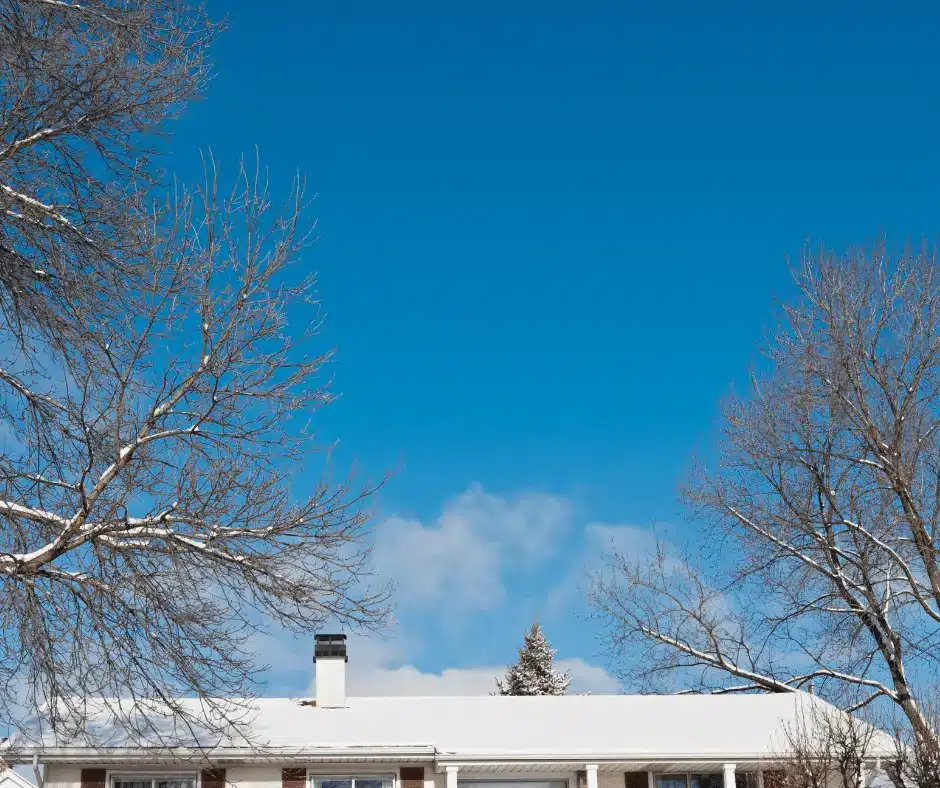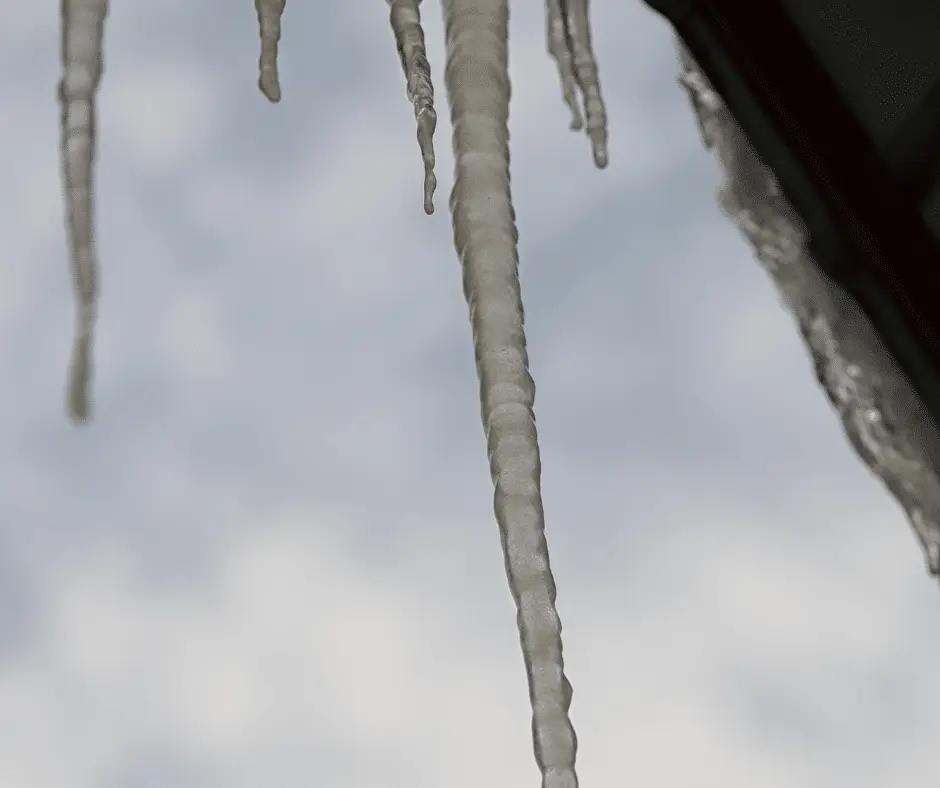When there’s news of an impending winter storm, many of us take stock of the food in our cupboards. We’ll run off to the store in a hurry to buy milk and bread along with flashlights, matches, and candles. But there is one common element we don’t think about during the hype of a snowstorm: the condition of your roofing in New England’s climate!
With our region’s history of winter weather, it’s critical to have a durable and energy-efficient roofing system that can handle even the worst of Old Man Winter.
Here is how to know if your roofing can handle the next major snowstorm.
The Elements of a Winter Storm
First, let’s think about what a winter storm entails. There are several types of winter storms, such as snowstorms, ice storms, and Nor’easters. These storms include:
- Heavy snowfall
- Cold temperatures
- Ice
- High winds
- Moisture
An energy-efficient roofing system needs to be able to properly handle all of these elements. Below are some examples of how these elements can damage your roof.

Heavy Snowfall
The weight of snow from a winter storm is no joke. It’s wet, heavy snow that can cause your roof to collapse.
This heavy snow can weigh as much as 12.5 pounds for every 5 inches! We explained how to calculate the weight of snow load on your roof in this blog post: How Much Does Snow Weigh? How to Tell if Snowfall is a Danger to Your Roof.
Generally, your roof should be able to handle heavy snow unless it’s structurally damaged or even decaying. Flat roofs are also more at risk for collapse than pitched roofs.
Furthermore, if your roof has more than 2 feet of snow on it, it’s time to find a professional to remove it for you. This is a considerable amount of weight even for newer roofs. Don’t attempt to remove it yourself!
When the snow is coming down at a rapid pace, it can be accompanied by another danger of winter weather: wind.
High Winds
High winds are most prevalent during blizzards and Nor’easters. In fact, Nor’easters can bring winds over 55 MPH! How can your shingles handle high winds during winter storms?
There are two ways that shingles are attached to the roof. First, there are nails that hold the shingles to the roof deck, and then there is adhesive on the back that makes it stick to the shingle right below it.
There are several reasons why your shingles will blow away during a windy winter storm:
- The shingles are incorrectly installed. For example, nail placement can impact the shingle’s ability to stay attached to the roof. Incorrect roofing installation will lead to performance failure quite quickly!
- The shingle’s seals can also fail over time. One common reason why this happens is due to adhesive failure, where the sealant unsticks due to moisture or thermal expansion and contraction.
- While this typically won’t be a problem during winter wind storms, one of the final reasons for seal failure is that the shingles are not rated to withstand the current wind conditions.
If you notice the following issues with your shingles, you might have trouble during the next winter storm:
- Bucking shingles.
- Curling shingles.
- Missing shingles.
- Leaks coming into the attic or interior walls.
Next, let’s take a look at one of the biggest winter woe’s for roofing: ice!

Ice Dams and Icicles
Ice dams are the result of snow melting on the roof and running into your gutters where the water freezes again. This can become a problem with even a small amount of snowfall and especially during ice storms.
With icicles, it’s the result of water dripping and melting as it freezes.
Both ice dams and icicles pose problems for New England homeowners, including:
- Moisture buildup in the attic that results in wood rot in rafter beams.
- Moisture seeps through and ruins interior walls, windows, and ceilings.
- Ice dams accumulate and become too heavy, which can pull the entire gutter off of the roof.
- The latter results in roof damage that is costly to repair.
Quality Roofing in New England
The best way to ensure that your roof makes it through major winter storms is by investing in quality roof replacement. Our energy-efficient roofing systems are one of the most reliable for our climate! Contact us now to get ahead of the spring rush by emailing svanderbilt@mycoastalwindows.com





